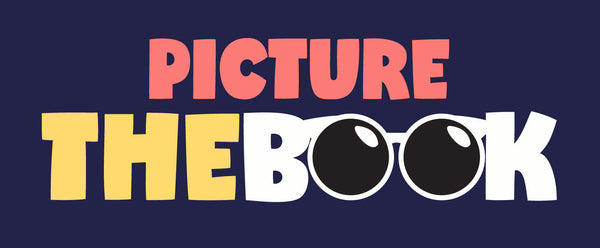
Ensuring Inclusivity: Making Your Picture Books Accessible for Blind Readers
Ensuring Inclusivity
Making Your Picture Books Accessible for Blind Readers
In my previous blog post, I emphasized the importance of creating inclusive picture books for blind children. In this post, I'll dive deeper into the crucial differences between inclusive and non-inclusive picture books. I’ll also provide you with practical ways to make your picture books more accessible to blind readers.
Inclusive vs. Non-Inclusive Picture Books

Inclusive picture books are designed to ensure blind children don't feel left out. These books are crafted so blind readers can comprehend the story through words alone. What’s more, the illustrations closely align with the accompanying text, helping blind children visualize the story in their minds.
On the contrary, non-inclusive picture books can leave blind children in the dark. Why? Because in these books, the words alone don't convey the full story. Instead, a significant part of the narrative is carried by the illustrations. Since blind children can't see these images, it's as if they're only hearing half of the tale.
Ways to Make Picture Books Inclusive
1. Collaborate with Illustrators: When you're an author of a picture book, it's vital not to rely solely on illustrations to convey the story. Work closely with your illustrator, helping them understand the importance of ensuring that the visuals closely mirror the accompanying words. This collaboration is key to crafting an inclusive book.
2. Textured Materials: To enhance inclusivity, consider using textured materials in your illustrations. These materials allow blind children to "see" shapes and textures through their sense of touch. Examples of textured materials include sand, velvet, plastic, raffia, and more. However, it's worth noting that creating such books can be expensive due to the materials used and the costs associated with shipping.
3. Braille Versions: Making Braille versions of your picture books is another way to ensure inclusivity. Braille provides a tactile reading experience for blind readers. Nonetheless, it's important to acknowledge that producing Braille books is expensive, and there's a risk of Braille dots getting flattened during shipping.
4. E-Books for Partial Sight Impairment: E-book versions of picture books are highly versatile and work well for children with partial sight impairment. E-books enable readers to adjust text magnification for better accessibility. However, it's important to note that, for children with no vision, e-books can be challenging due to the difficulty screenreaders face when interpreting illustrations. In a future post, I'll delve into this issue further based on my personal experience.
5. Audio Versions: Creating audio versions of your picture books is a powerful way to ensure inclusivity. To do this effectively, you'll need a skilled sound engineer, a captivating narrator, and various other components I'll cover in an upcoming post.

A Worthy Endeavour
In conclusion, making picture books blind-friendly is a worthy endeavor, as it ensures that all children, regardless of their visual abilities, can immerse themselves in the joy of storytelling. In future posts, we'll explore these methods in more detail, offering insights and practical tips for creating truly inclusive picture books.
Till my next post,
Sherri Eri
P.S. Subscribe to my e-newsletter and receive a mini ebook introducing the newest cat soon to join the Cool Kitty Series.

